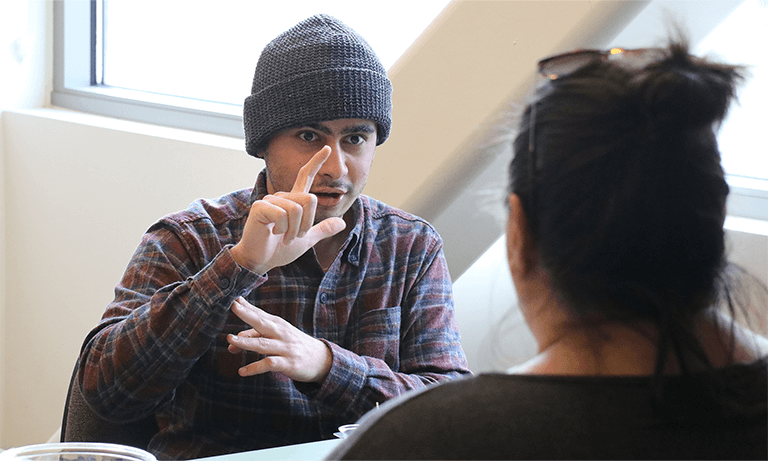Mechanical engineering student Yosef Towfique was born to the sounds of the outside world that suddenly went quiet after his second birthday.
The unexplained, rapid loss couldn’t be tied to an injury or illness, and hearing aids proved ineffective, according to Towfique.
While Towfique and his family created basic gestures they used at their home in Tracy, California, he didn’t have a complete language until kindergarten, when he was enrolled in a Deaf and Hard-of-Hearing program.
Towfique learned the movements of the hands and face that constitute American Sign Language, allowing him to understand the world through visual descriptions and make meaningful connections to those around him. Few of Towfique’s peers at Cal Poly use ASL, but he is determined to relate to them through an ASL interpreter who has a background in engineering and a dedication to the Deaf community.
“Yosef has opened other students’ minds to what deaf people can do,” said Jennifer Beevers, who is accompanying Towfique through college. “When a student-interpreter team goes into a classroom, they improve the worldview and accessibility awareness for everyone in that class.”
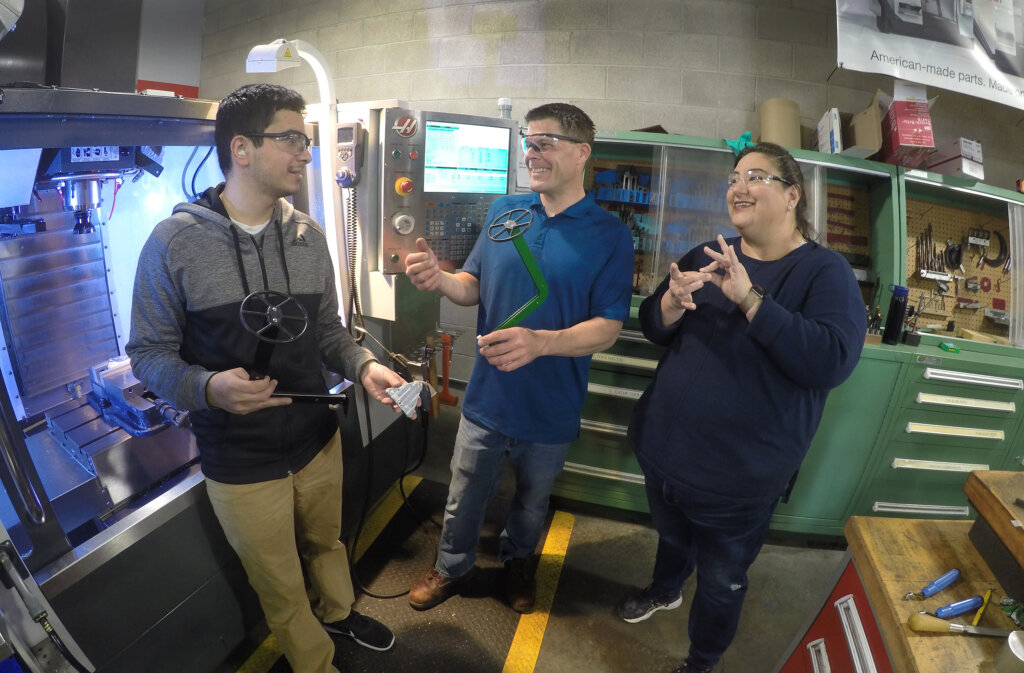
Teaming Up
Towfique was fitted with a cochlear implant around the time he was learning ASL, which enabled him to hear some speech and supported the development of language skills through speech therapy.
He attended mainstream schools, accompanied by an interpreter, as he developed an affinity for woodworking – crafting furniture for his home – then metalworking under the guidance of his dad and other employees.
Towfique’s dad, who emigrated from Afghanistan, assembles a variety of sheet metal products at his sheet metal fabrication company. Towfique officially joined his dad at the company as a senior in high school and continued while he attended Los Positas College, a community college in Livermore.
Towfique was admitted to the College of Engineering in fall 2021 as a transfer junior, following in the footsteps of a family member who had studied mechanical engineering at Cal Poly and praised the program.
“Learn by Doing is important to me,” Towfique said of his decision. “I loved the idea of having hands-on engineering labs and classes.”
As soon as Disability Resource Center staff learned Towfique had chosen Cal Poly, they enlisted Beevers to be his primary interpreter.
Beevers, who grew up in Los Osos, became a Civil Air Patrol cadet at age 12 and learned to fly before she could drive. She spent summers at the family business making granite surface plates and the school year using American Sign Language with friends, one of which had a deaf sister.
She studied behavioral science at Cuesta College before shifting to a Deaf Studies and Interpreter training program at the University of Arizona that emphasized educational interpreting.
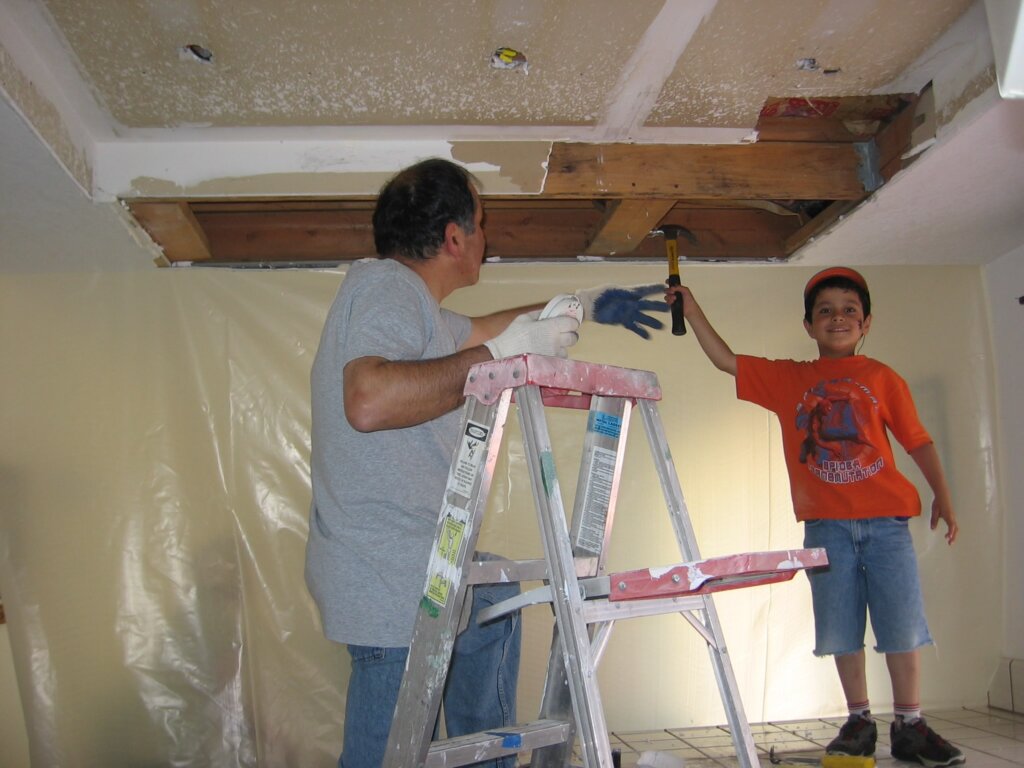
“The sign language I learned as a child came back so easily,” Beevers said. “It felt like the universe had confirmed this was my calling.”
She interpreted at the Arizona School for the Deaf in mainstream classes before taking a dream job at Raytheon Missiles & Defense that thrust her into the world of engineering.
While at the Tucson factory, she interpreted meetings and training sessions for deaf employees working as industrial and mechanical engineers and even a theoretical physicist.
“I saw every phase of production, from the design to the building and delivery of missiles,” she said. “I wanted to do my small part to make sure the systems that save people’s lives worked.”
Beevers returned home to care for her mom in 2011 and was promptly hired by Cal Poly as an interpreter. Her first engineering student arrived in 2014 and Towfique followed seven years later, much to her delight.
The two met during a chaotic Week of Welcome event, but once they got into a calm classroom setting, Beevers and Towfique quickly built trust and mutual respect.
“Yosef is wise beyond his years,” she said. “He’s friendly, humble and very patient with people.”
Towfique added the two make a great team but joked there’s a fringe benefit for Beevers: “She’s getting a free education in mechanical engineering,” he said with a big grin.
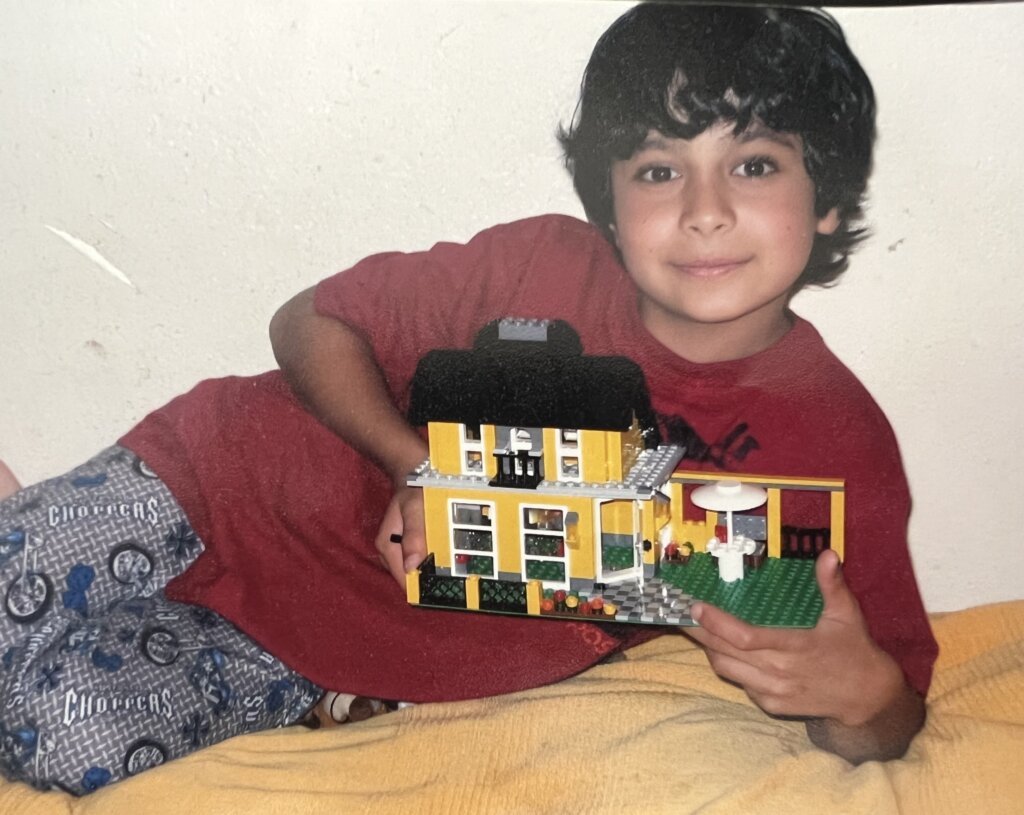
‘What Sign Are We Learning Today?’
On a recent afternoon, Beevers and Towfique signed to each other as they walked down a hallway in Building 192 to attend Towfique’s senior project class.
Sarah Harding, who leads the class, asks her mechanical engineering students each week for a word or phrase they want to learn in ASL.
“What sign are we learning today?” she shouted over the din of students working in their project teams.
“Hungry!”, the students responded as Towfique taught them the sign, forming his right hand into the letter “c” and moving it down the middle of his chest.
Towfique is on a team with three others – Derek Cedillo, Jairo Fernandez Garcia and Alejandro Samaniego – who are exploring an underground device that can generate power from the passage of motor vehicles over a roadway.
They huddled to discuss ideas for the project they will collaborate on for 30 weeks.
Beevers sat near the group, interpreting for Towfique. Her knowledge from her years at Raytheon and with the Civil Air Patrol proves invaluable, as she understands the fundamental principles. For more specific concepts, she reads Towfique’s textbooks: “Engineering has such a specific lexicon that it’s important to have accurate definitions,” she said.
Samaniego said their group relies on Beevers to ease communication in class but adopts alternate methods for out-of-class meetings.
“I can speech-read if they are talking slowly and clearly, but we also text and write,” Towfique explained. “Communication has been challenging, but I’m used to it.”
Towfique was surprised upon his arrival at Cal Poly to learn many of his classmates and teammates in Cal Poly Racing – where he helped fabricate a steering wheel for the Formula SAE car – had not met a deaf person. He wishes more hearing people would learn ASL through their high school or college classes so they could expand their ability to interact with others.
Beevers will continue to interpret for Towfique until he finishes classes in the fall. She plans to stay in touch with Towfique as he seeks a job in design or manufacturing and the senior project team that has embraced her.
“Yosef has helped a lot of students at Cal Poly to see what is possible,” she said as the two resumed signing on their way to rejoin the team.
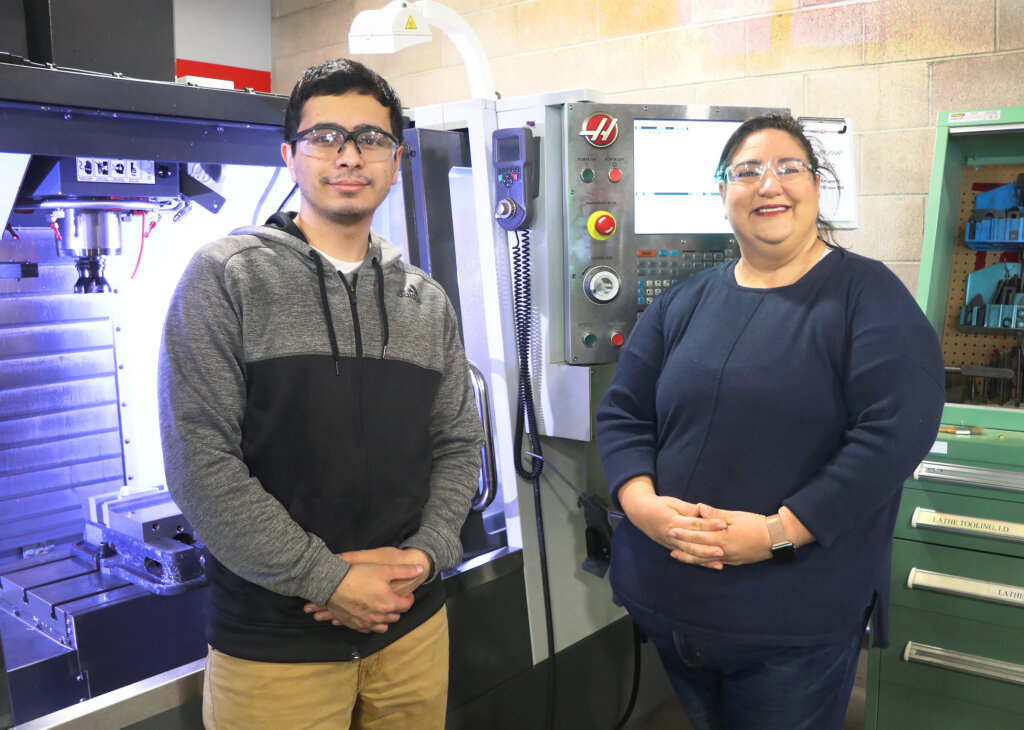
Improving Access
Jennifer Beevers, with Yosef Towfique in IME 330, is passionate about ensuring accessibility for deaf students, and she believes visual support is key.
She encourages staff and faculty to use visual descriptions of the concepts they are teaching, which can take the form of pictures, graphs, posters, charts or flash cards.
“I ask clarifying questions when I’m in the classroom, such as, ‘Is there a physical picture you can write on the board?’” Beevers explained.
She’s also a big advocate for captions that display words as the textual equivalent of spoken dialogue.
“Creating accessible visuals improves the literacy of all students,” she added.
By Emily Slater

